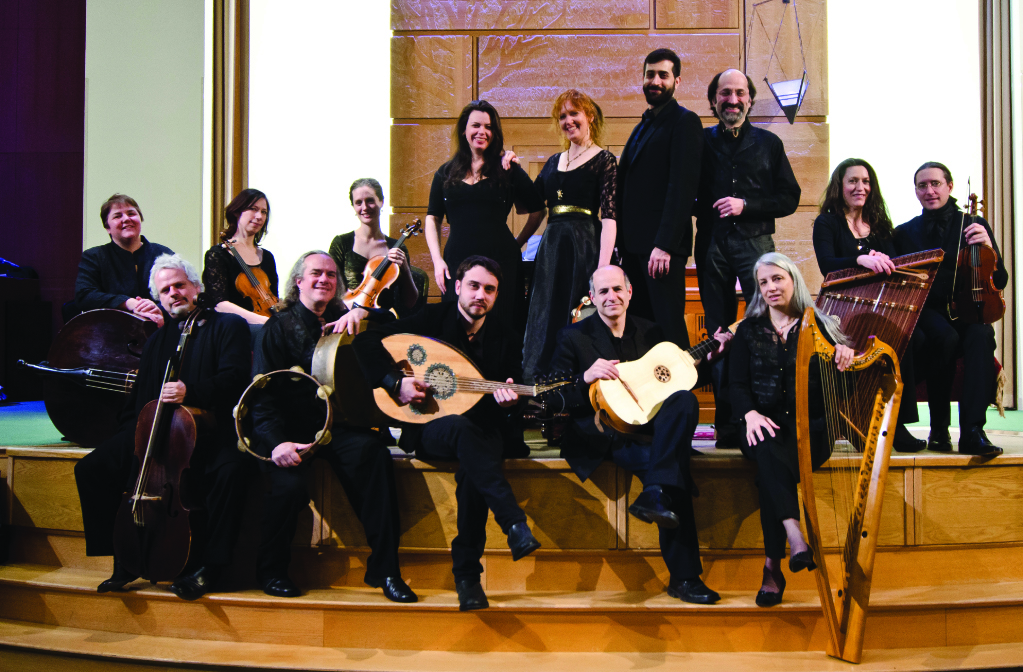Cleveland Museum of Art’s centennial exhibition, ‘Pharaoh: King of Ancient Egypt,’ masterfully takes visitors on a historic trip through the once-mighty desert kingdom
Story by Carlo Wolff
Photography by Michael C. Butz

Statue of government official Sennefer, dating back to about 1479 to 1425 B.C.
How layered reality was to the ancient Egyptians comes clear in the magisterial “Pharaoh: King of Ancient Egypt” exhibition at the Cleveland Museum of Art. Dominated by artifacts from the British Museum in London, with 10-plus pieces from CMA’s own collection, this is the first Egyptian exhibition at CMA in 20 years. It’s a fitting successor to “Painting the Modern Garden: Monet to Matisse,” the far larger, similarly resonant and wildly popular show the museum concluded in early January.
With more than 150 objects on display, from tiny pieces of jewelry to weapons to colorful sarcophagi to massive temple sculptures, the exhibition is one to absorb over and over. On view in the Kelvin and Eleanor Smith Foundation Hall, it is designed to show the levels involved in the very notion of pharaoh, ancient Egypt’s intermediary between the many gods the people worshipped and the people themselves.
Its spectrum redolent with earth and sun, this covers roughly from 3000 B.C. to the Roman conquest of 30 B.C., and it starts

Statue of Amenemhat III in a devotional pose, dating back to about 1859 to 1814 B.C.
with a room dedicated to showing the lay of the land. The red granite Hathor capital from the Temple of Bastet — an imposing and impossibly heavy object indeed — ushers the visitor into the display. That capital certainly commands your attention.
The next room, dedicated to the gods, features highly stylized animal and human figures, all possessing a unique quality of stillness. One of the key sculptures is the head of Pharaoh Tuthmosis III, from the 15th century B.C. The king seems to be smiling; that quality of stillness, underlined by the two-dimensional feel of the stelae and carvings in other rooms, gives many of these artifacts a peculiar timelessness, even modernity.
Tuthmosis’ crown, seeming to rear up conically from his head, has a cobra as a kind of hood ornament. Compared to the opening capital and many other artifacts, this is small, but it’s arresting out of proportion to its size. Tuthmosis’ headpiece would make a gorgeous modern hat. Be sure to check it out from the side.

Sphinx of Pharaoh Amenemhat IV, dating back to about 1814 to 1805 B.C.
Another room, dedicated to symbols of power, features jewelry and sacrificial objects; each royal crown bore specific symbols and associations, making virtually all the objects in this mysterious and authoritative exhibition both decorative and philosophical.
Texts attached to the displays, which are set back and spotlighted and/or mounted in glass cases, provide details on their provenance and help the viewer interpret them. To the modern observer, this is art — and history. One can only speculate that to the Egyptian of those times, this all spoke of religion and spirituality; the aesthetics were secondary.

A series of shabtis, which were human figurines placed inside tombs to undertake agricultural work on behalf of the deceased in the afterlife.
Among the more interesting displays are “foundation deposits,” miniature replicas of construction implements buried in temple foundations. These ritual objects, akin to the talismans and amulets that adorned Egyptian royalty, were created and sited to protect and purify those houses of polytheistic worship. They are representations of the permanence of those temples, which the Egyptians built of stone. They built their palaces of sun-dried mud brick, suggesting they regarded their rulers as more temporary than the gods they represented.
As if the multiplicity of gods weren’t enough, the pharaonic age also featured rulers from countries other than Egypt, including the Nubian Shabaqa, and Greeks, like Alexander the Great. The variety of objects throughout this authoritative display attests to a period far more diverse and turbulent than what used to be found in the history books. CV
On View
WHAT: Pharaoh: King of Ancient Egypt
WHERE: Cleveland Museum of Art, 11150 East Blvd., Cleveland
WHEN: Through June 12
TICKETS & INFO: Free to members; $7 for member guests and people aged 6 to 17; $15 adults, $13 seniors and college students, free for children under 5. Call 216-421-7350 or visit clevelandart.org











